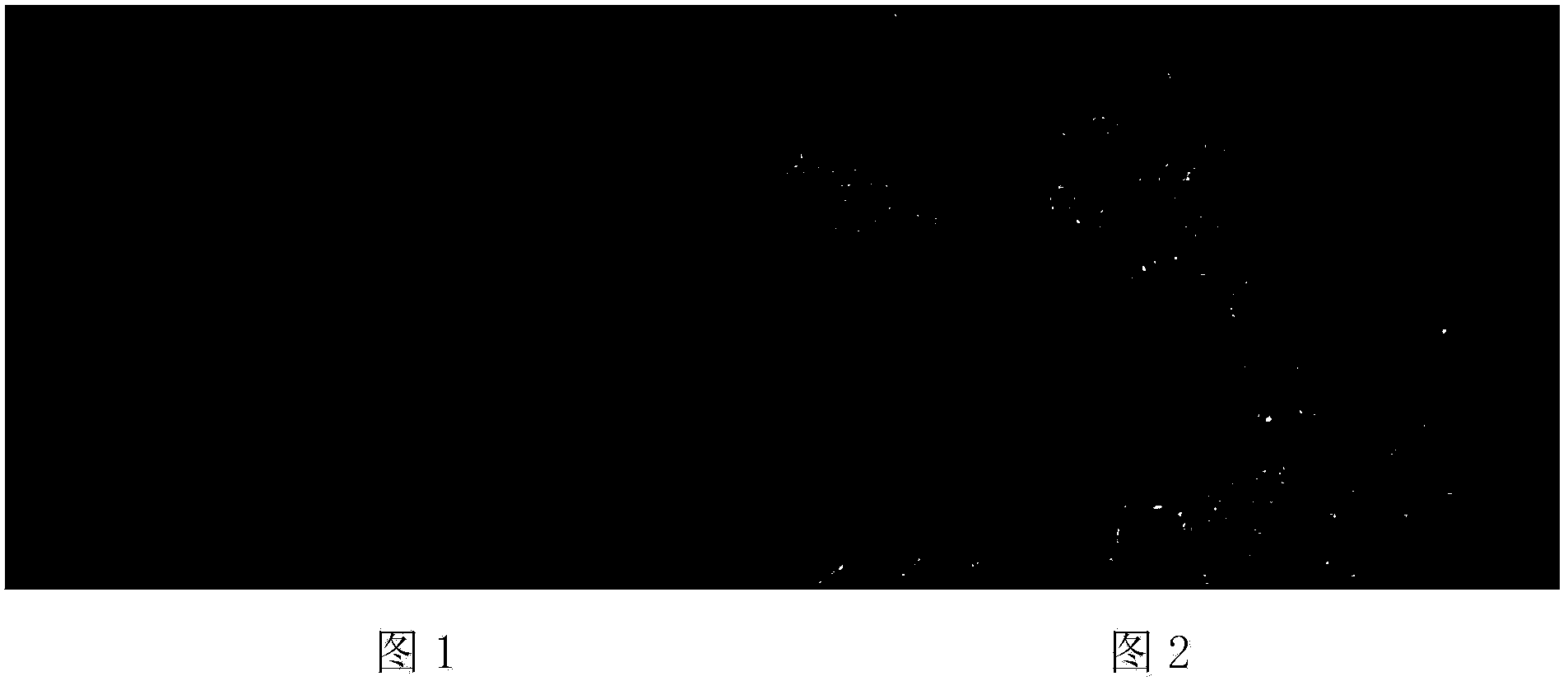Preparation method of fluorescent probe for identification of microfilament bacteria
A technology of fluorescent probes and microthrix, applied in the direction of fluorescence/phosphorescence, chemical instruments and methods, luminescent materials, etc., can solve the problems of low cell penetration rate, low rRNA content, etc., and achieve high fluorescence intensity and stable fluorescence properties , the effect of simple preparation method
- Summary
- Abstract
- Description
- Claims
- Application Information
AI Technical Summary
Problems solved by technology
Method used
Image
Examples
preparation example Construction
[0019] The preparation method of the fluorescent probe for identifying Microthrix of the present invention realizes the synchronization of the preparation and modification of the fluorescent dye. In the synthesis route of the carbazole pyridine styrene cyanine dye, a halogenated long carbon chain compound The 4-methylpyridine moiety is modified, and then reacted with the 3-formyl-N-ethylcarbazole moiety to obtain a fluorescent probe with a long hydrophobic chain. This process mainly includes the following steps:
[0020] (1) Synthesis of long-chain alkyl-4-methylpyridine halide salts
[0021] 0.8-1.5 parts of 4-methylpyridine, 0.7-1.3 parts of halogenated long carbon chain compound and 28 parts of toluene were respectively added to the round-bottomed flask, and the magnetic stirring was fully dissolved to carry out the reaction. The reaction temperature was 120 ° C. After the reaction was completed, Cool to room temperature, remove the upper layer of toluene to obtain oil, and...
Embodiment 1
[0030] 0.4650g of 4-methylpyridine, 1.5268g of 1-bromohexadecane and 15mL of toluene were respectively added to the round-bottomed flask, fully dissolved by magnetic stirring, refluxed at 120°C, after the reaction was completed, cooled to room temperature, removed the upper layer of toluene, washed with n-hexane The yellow oil remained three times, and the washed product was evaporated under reduced pressure in a rotary evaporator to remove the solvent to obtain 1-hexadecyl-4-methylpyridine bromide with a yield of 91.5%. 9.5 mL of phosphorus oxychloride was added to the round-bottomed flask, and 7.7 mL of DMF was added dropwise under cooling and stirring in an ice-water bath. After the dropping was completed, the mixture was stirred at room temperature for 30 min, and 16 mL of 1,2 containing 3.15 g of N-ethylcarbazole was slowly added dropwise. -Dichloroethane solution, dripped, refluxed for 8h. After the reaction was completed, it was cooled to room temperature, the reaction ...
Embodiment 2
[0033]0.6985g of 4-methylpyridine, 1.8023g of 1-bromotetradecane and 15mL of toluene were respectively added to the round-bottomed flask, fully dissolved by magnetic stirring, refluxed at 120°C, after the reaction was completed, cooled to room temperature, removed the upper layer of toluene, washed with n-hexane The yellow oil remained three times, and the washed product was evaporated under reduced pressure in a rotary evaporator to remove the solvent to obtain 1-tetradecyl-4-methylpyridine bromide in a yield of 92.7%. 9.5 mL of phosphorus oxychloride was added to the round-bottomed flask, and 8.9 mL of DMF was added dropwise under cooling and stirring in an ice-water bath. After the dropping was completed, stirred at room temperature for 30 min, and 25 mL of 1,2- The dichloroethane solution was dripped, and the reaction was refluxed for 8h. After the reaction was completed, it was cooled to room temperature, the reaction solution was poured into ice water and stirred for 1 h...
PUM
 Login to View More
Login to View More Abstract
Description
Claims
Application Information
 Login to View More
Login to View More - R&D
- Intellectual Property
- Life Sciences
- Materials
- Tech Scout
- Unparalleled Data Quality
- Higher Quality Content
- 60% Fewer Hallucinations
Browse by: Latest US Patents, China's latest patents, Technical Efficacy Thesaurus, Application Domain, Technology Topic, Popular Technical Reports.
© 2025 PatSnap. All rights reserved.Legal|Privacy policy|Modern Slavery Act Transparency Statement|Sitemap|About US| Contact US: help@patsnap.com

